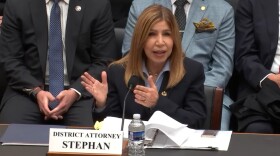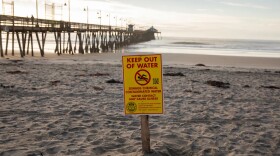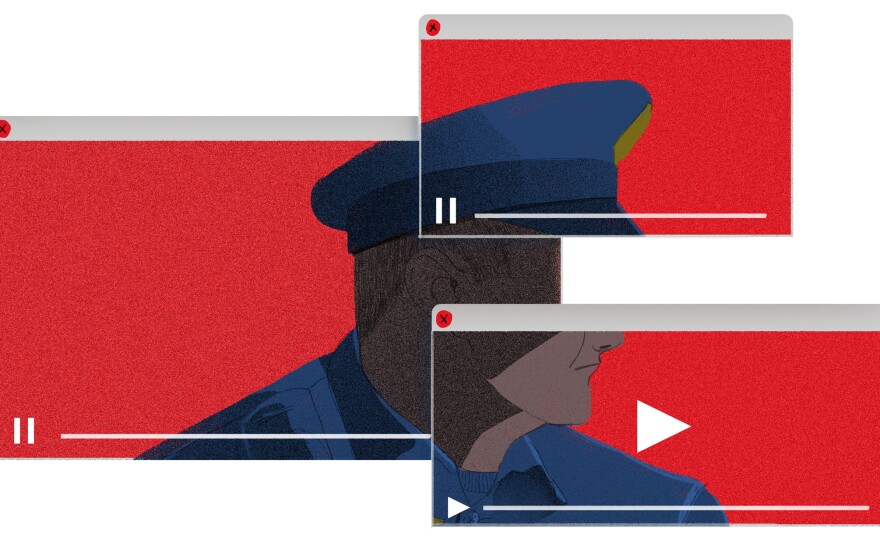
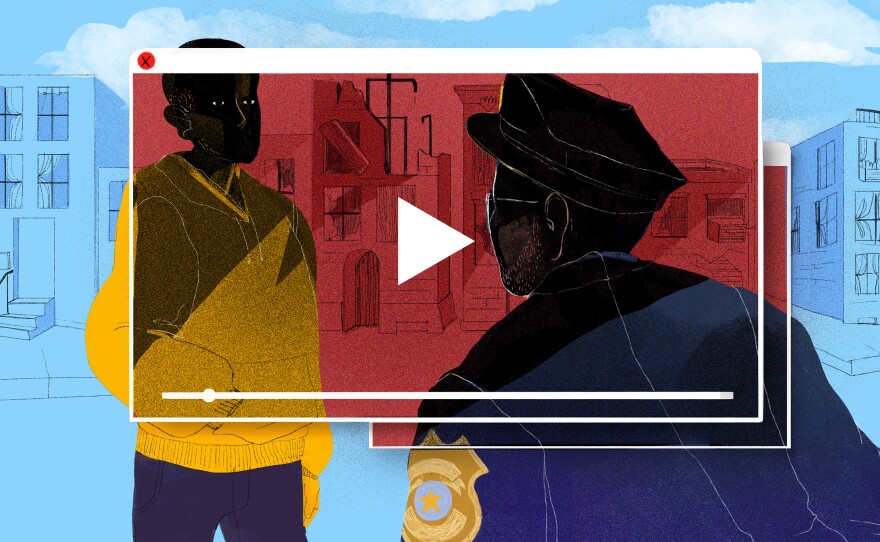
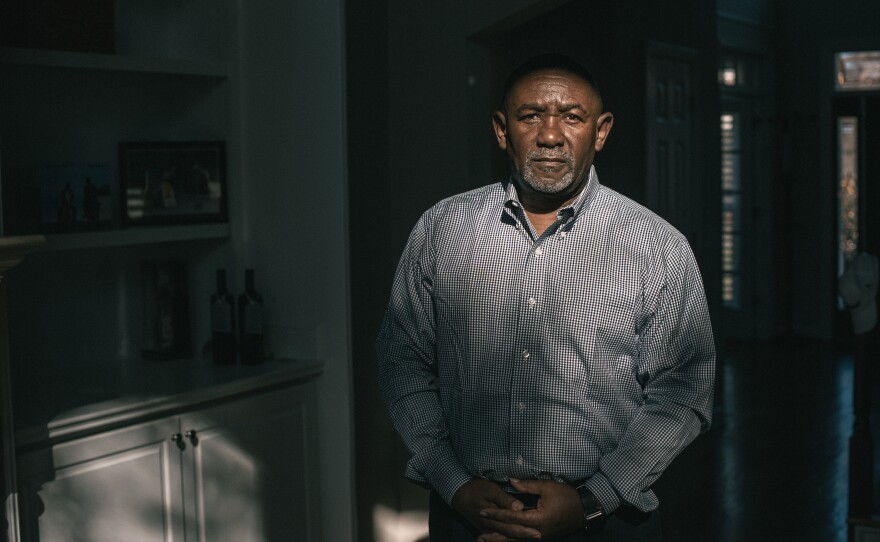
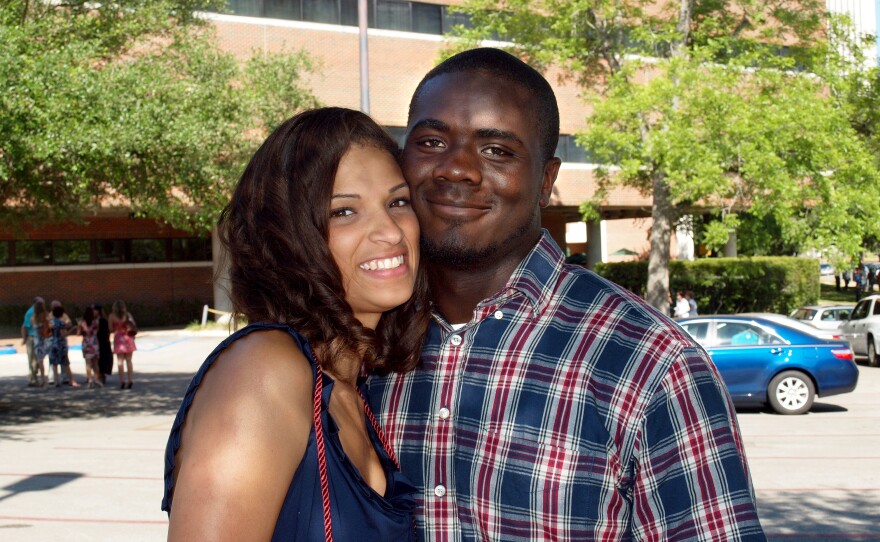
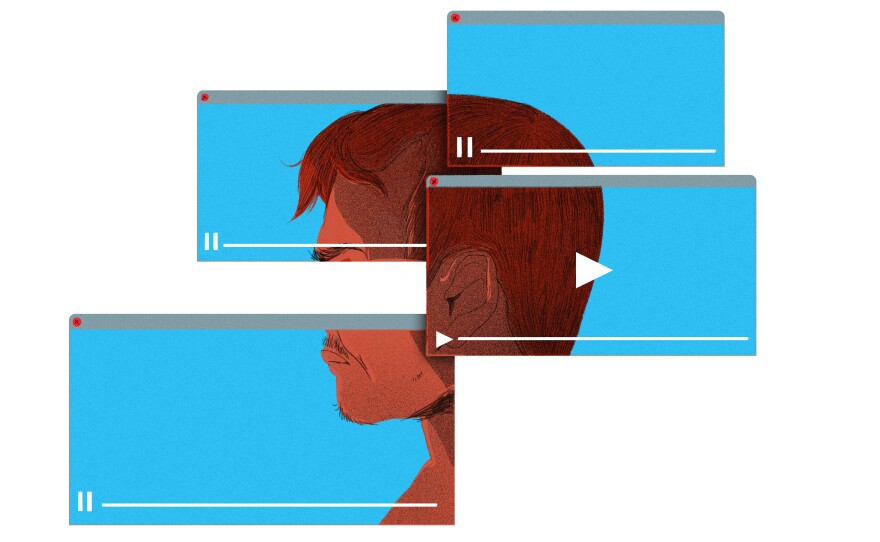
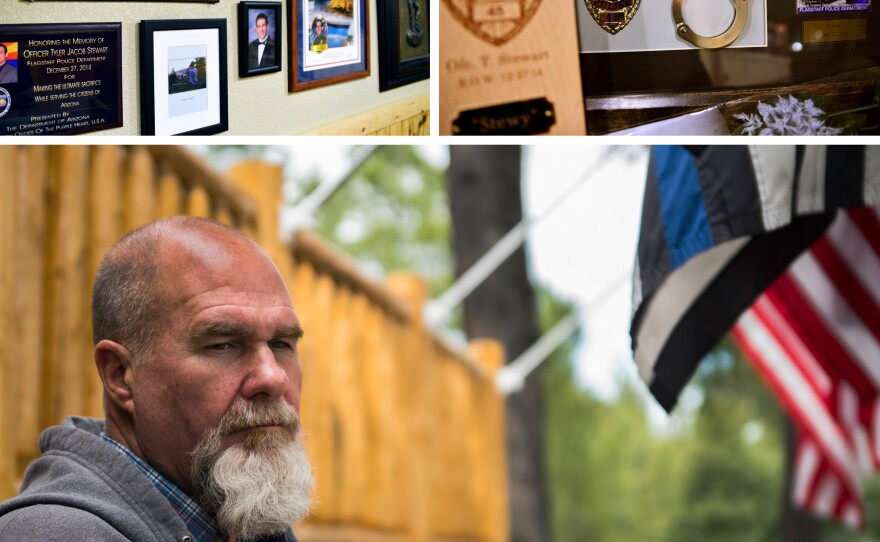
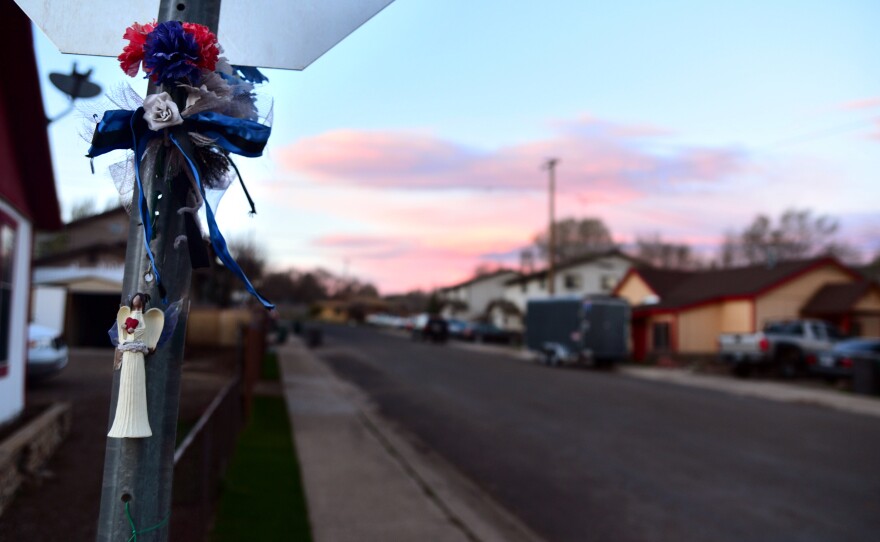
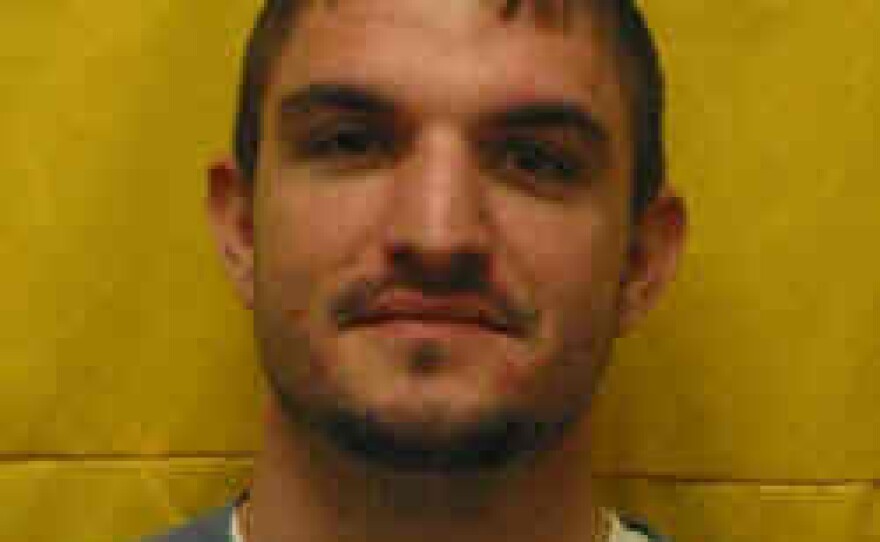
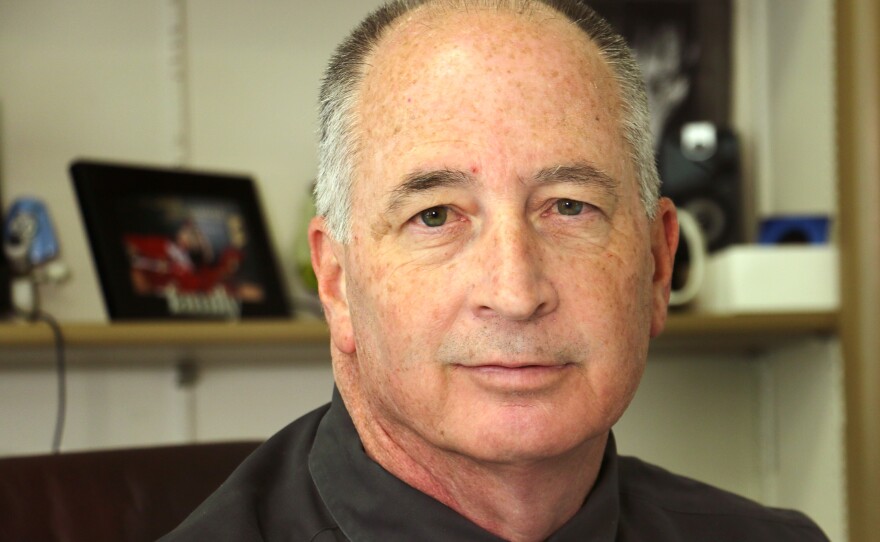
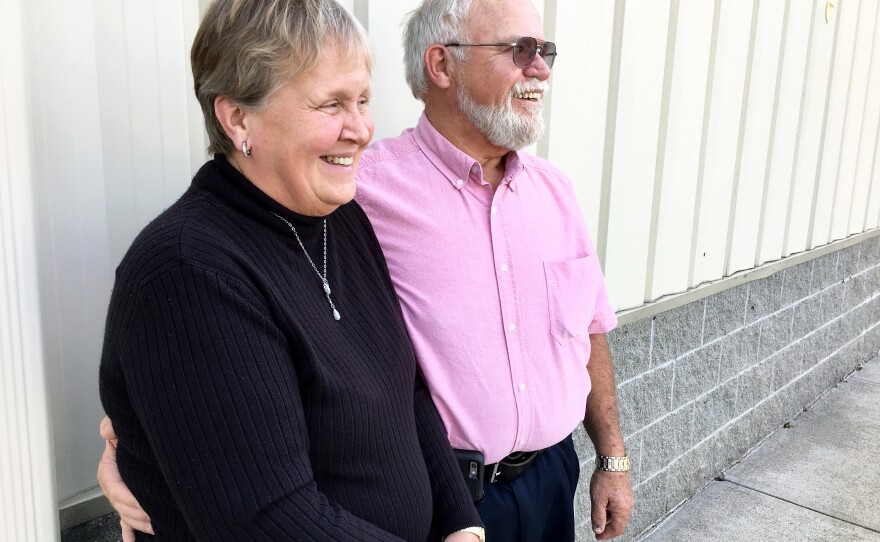
Editor's Note: This story includes videos and descriptions of violent encounters between police and civilians, as well as language that may not be appropriate for all readers.
For three days last summer, many of us watched as TV and computer screens showed violence between police and civilians. Alton Sterling and Philando Castile were shot and killed by police. Then a gunman killed five police officers in Dallas.
That week made clear just how much these videos of police violence have become part of our lives.
The videos are not new, of course — the Rodney King beating by Los Angeles police was filmed in 1991. But from dashcams to body cameras to bystanders' cellphones, more and more interactions between civilians and police are being captured on camera.
How are these videos changing the police? How are they changing civilians? And what can we learn from them?
These are the questions we tried to answer as we looked at three very different videos.
Charlotte, N.C.: Confirmation Bias
The death of Jonathan Ferrell is one of the few police shootings where nearly every piece of evidence and every perspective was publicly examined and presented. And yet people still came to startlingly different conclusions about what happened.
Around 2:30 a.m. on Sept. 14, 2013, a woman calls 911 and says a black man is trying to break into her house. Three officers respond; one has his dashcam rolling.
His headlights shine on Ferrell, a black man in a green shirt and light-colored pants. He matches the description the woman gave to 911.
At first you see Ferrell walking toward the cops. Then you see both his hands go to his waist, like he might be pulling up his pants.
Then you see a red dot on his chest. We later learn it's from a second officer's Taser.
Then Ferrell starts to run, and he runs right off camera. You hear a third officer, Randall Kerrick, tell Ferrell to get on the ground.
And then you hear 12 gunshots. Ten of those shots hit Ferrell. Officers handcuff him, and tell him not to move. At some point, Ferrell dies.
Rodney Monroe was chief of police at the time — the first black chief of the Charlotte-Mecklenburg department. He is now retired.
Monroe says investigators could not escape the fact that Ferrell was so clearly unarmed in the video. Three officers should have been able to handle one unarmed man without shooting.
"Fear can engulf you in a manner that won't allow you to think logically or based on your training," Monroe says. "And I think more force was used than what was necessary, than what [Kerrick] was met with."
So Monroe and his team of investigators decide to charge Kerrick with voluntary manslaughter. It is the first time in 30 years that a Charlotte-Mecklenburg police officer has been charged for shooting someone on the job.
When the case goes to trial in 2015, the video is played several times.
The prosecution argues that Ferrell was at the woman's door, looking for help. And when he saw those red dots on his chest, he was running away from police, in fear.
The defense says Ferrell was trying to break into the woman's house, that he was fixing for a fight when he hitched up his pants, and that he was charging at police in that video.
In the end, eight jurors side with the defense and vote to acquit Kerrick. Of those jurors, six were white, one was black, and one was Hispanic. Four jurors, vote to convict. Of those jurors, two were black, one was Hispanic, and one was white.
The judge declares a mistrial, and the prosecution decides not to retry the case. Kerrick goes free. But as part of a settlement, he resigns from the police force.
How could 12 jurors see the same piece of evidence and come to such different conclusions?
"Confirmation bias is what that's called," says Charles Monnett, a lawyer who represented the Ferrell family in a civil case against the city of Charlotte.
"People see what they want to see and they take their previous beliefs and they use the film to confirm whatever they are."
But, Monnett says, the prosecution could have used the video more effectively during the trial.
When Monnett deposed the other two police officers who were there that night — Adam Neal and Thornell Little — for the civil case, he took their statements about what happened and compared them to the video, frame by frame.
The depositions allowed the lawyer to show discrepancies. For instance, Neal had said that just before Ferrell started running that night, he hitched up his shoulders as if he were preparing to fight. But then they watch the video, and it looks like Ferrell is just pulling up his pants.
In the end, the city settles Monnett's case and pays the Ferrell family $2.25 million. It is not an admission of guilt.
As unsatisfying as this might be for Ferrell's family, the dashcam video did move the needle.
Lawyers were able to challenge what the police officers said. And the case would never have even gone to trial without the video.
"The police no longer own the narrative," says criminologist Phil Stinson of Bowling Green State University.
Before we had these videos, he says, the dead man couldn't talk.
Now, Stinson says, in some ways, he can.
Flagstaff, Ariz.: A Video That Takes On A Life Of Its Own
The next video we looked at is the kind that police watch and share, a lot. It was the first known case where an officer's death was captured on his own bodycam.
And afterward, the video took on a kind of afterlife — and came to mean very different things to different people.
It was taken on Dec. 28, 2014, from the bodycam of Tyler Stewart, a police officer in Flagstaff, Ariz.
A college student calls the police and says her boyfriend has damaged her apartment after a big argument.
Stewart, who is white, has talked to the woman. In the video, he walks up an alley, to the back door of the boyfriend's house.
The boyfriend, Robert Smith, is also white. He's 28 years old, and he's pretty skinny. His eyes and cheeks are kind of sunken. He's wearing a winter coat. He looks nervous.
Stewart asks if they can talk outside. Smith says yes, but turns back inside. He comes back out with a stocking hat on and his hands in his pockets.
And then, they just talk. Officer Stewart wants to know about the damage to the girlfriend's apartment.
You can see Stewart look down at Smith's pockets. Then the police officer finally asks Smith if he can pat him down.
"You don't have anything in there?" Stewart says.
"No, no, just my smokes," Smith says.
Stewart reaches out. And then, out of nowhere, Smith whips a gun out of his pocket. It happens so fast you can barely see it.
And the video stops.
Smith shoots Stewart five times, then shoots himself. They both die.
The facts of what happened that day are not in dispute. The video has been seen hundreds of thousands of times on YouTube. It gets shared on Facebook groups and blogs.
And police use it in training.
We go to one of these classes, in Prescott, Ariz.
Jim Glennon, a former cop from the Chicago area who now trains police, leads the class. Mostly, he plays videos — of cops shooting people, and of people shooting cops.
The idea is to show how dangerous a police officer's job can be, and to teach police to be prepared for the worst, all the time.
Glennon plays the video from Flagstaff.
"People are programmed to believe violence is what they see on TV," he says. "The music starts to well up. You've got a different camera angle. You know the guy's a bad guy. But in real life, it happens in the blink of an eye."
We wonder if it's hard for the relatives of Tyler Stewart and Robert Smith for this video to be used this way.
Turns out Stewart's dad was a state cop for 28 years. And he says he's OK with the fact that the video is being watched in classes around the country.
Frank Stewart lives in a log cabin house in the woods a few miles outside of Flagstaff. It's a house he and Tyler were building together.
When he was younger, Tyler would ride around with his dad.
By the time he was killed, Tyler was 24 years old and had been a cop for seven months. Frank says his son loved his job.
We want to know if the video has come to mean anything to Frank Stewart. Has it helped him understand what happened or why it happened?
"Absolutely, Tyler made some mistakes that day," Frank says. "The first one is he allowed the kid to walk back in the house ... and I believe that's when he went and got his gun."
Tyler also could have drawn his weapon first, Frank says. He could have called for backup. And, when he saw Smith reach into his pocket, he could have acted more defensively.
Some of Smith's friends and relatives have not watched the video. Others have, and they have come to regret it.
Taylor Mahoney was Robert Smith's best friend.
Mahoney was texting with Smith the day of the shooting. Smith said he hadn't been getting sleep, because of pain from a rotten tooth. And after his girlfriend called the police, he texted that he was afraid of going to jail.
Mahoney says he waited about six months before he watched the video. He immediately regretted it.
"It was just sickening to watch really," Mahoney says. He says he simply didn't recognize his friend in the video.
Mahoney says the fact that the video is out there means the worst day of his life will just keep playing on loop over and over.
"It's never going to be laid to rest fully ... there really can't ever be any closure," he says.
This is the thing with these videos: They document the last moments of these people's lives. And because of that, we want them to mean something.
For the police, a video like this is a way to justify what they do.
For Frank Stewart, Tyler's dad, it's a reminder that ultimately it's all up to God.
For Taylor Mahoney, it's a constant loop of the worst day of his life.
A video like this can give us some closure, or it can remind us there are some things that can't actually be explained.
New Richmond, Ohio: How Videos Change Us
In the third video we looked at, nobody shoots anybody.
On April 16, 2015, in a suburb outside of Cincinnati, Jesse Kidder of the New Richmond Police Department is following Michael Wilcox in a car.
Wilcox is suspected of killing a person. And he has told police he has a gun. Wilcox drives onto a side street, gets out, and starts running at Kidder.
Kidder exits his car with his gun drawn. He tells Wilcox to put his hands up. Wilcox yells, "Shoot me!" Kidder says he doesn't want to shoot.
Wilcox puts his hand in his pocket then starts running at Kidder. At one point Kidder loses his balance and falls on his back. But he jumps back up and you hear sirens. More police are coming.
Wilcox turns around and lies on the ground.
This is not the kind of police video we usually see in the news. And it all points to how these videos are changing the way police — and the rest of us — react in extreme situations.
The video was taken from Kidder's body camera. His police chief later releases the footage to local media.
The story makes national news. A few weeks later, Kidder speaks at a conference in Washington, D.C., put on by a police think tank.
"I knew he had crossed the line to where I could have used deadly force," Kidder tells the conference. "But I just felt that, you know, just because you can take a life, it doesn't mean you should."
The moderator tells Kidder's boss that he's got a "brave officer." There's a big round of applause.
Still, is there another reason why Kidder didn't shoot that day?
Commentators think they have an answer: Jesse Kidder is white. Michael Wilcox is white. People say if Wilcox had been black, Kidder would have shot him.
Decades of research have shown we all have implicit bias, even if we aren't overtly racist. And many studies have shown that this bias will affect how police interact with people.
But when you ask individual police officers if race was a factor in an incident like this, they almost always say no.
We wanted to talk to Jesse Kidder about this. But he did not want to talk on the record.
So we go to New Richmond, Ohio, and ask his police chief at the time of the incident, Randy Harvey, if race played a role in this case.
"That's the farthest thing from the truth," Harvey says.
He says there's a different reason why Kidder didn't shoot Wilcox: Kidder was a Marine who did two tours in Iraq.
Kidder told people at the D.C. conference that he'd been in "deadly force situations" while he was a Marine. And the Marine Corps says Kidder was awarded a Combat Action Ribbon in Iraq, which means he was under enemy fire and engaged the enemy.
This is something more and more police chiefs and trainers are coming to understand: There's a stereotype of a soldier who comes home from a war, becomes a cop, and then is trigger happy.
But actually, in many cases, they have more life experience, in stressful situations, than young recruits right out of the police academy.
Eventually, other cops criticize Kidder for not shooting Wilcox that day. At one point, Harvey says the criticism gets so bad, Kidder wants to quit his job.
It all points to how much more scrutiny police are under these days, even from each other.
In the end, Harvey talks Kidder out of quitting. And Kidder moves on to a different department.
This is not the end of the story.
It turns out the encounter with Kidder is the second time that day Michael Wilcox was not shot by a cop. About half an hour earlier, Wilcox was stopped by Vicky and Buddy Coburn. At the time, Vicky was working for a local police department, and Buddy was an investigator with the prosecutor's office. They're also married.
At the time, Vicky was working for a local police department, and Buddy was an investigator with the prosecutor's office.
That day, the Coburns were off work and had gone out for dinner.
They get a call saying a woman had been shot and killed in a house. They go to the house, and head back out to the car to get a search warrant. On the way, they get a description of the car the suspect is driving. They see the car and force him over to the side of the road.
Buddy draws his gun and goes to the driver's side. Vicky goes to the passenger side. Buddy grabs Wilcox by the shirt.
"He's screaming, screaming, 'Kill me, kill me,'" Buddy says. "And he says, 'I did it, I did it. I killed her. I got a gun.'"
By this point Vicky has come around to the driver's side. Both Buddy and Vicky are holding onto Wilcox. Buddy has the gun to Wilcox's head. At one point, Buddy says, Wilcox tries to grab his gun.
And then, Wilcox lunges forward and reaches to the floorboard.
"We both simultaneously jerk him back up," Buddy says. "And as he came back up he hit the ignition switch ... and slammed it in gear and away we all three went."
Wilcox drags Buddy and Vicky for a few seconds until they let go. Wilcox keeps driving.
Here again, we had to ask, why didn't they shoot him? Especially if they thought he was going for Buddy's gun?
Buddy says he believes he didn't kill Wilcox because of something called the Ferguson effect.
"I think a lot of it has to do with the media and the portrayal of police officers shooting people," he says.
The Ferguson effect is the idea that ever since white police officer Darren Wilson shot and killed Michael Brown in 2014, and the massive protests and scrutiny of police that followed, cops say they're more reluctant to use force.
And that, some say, has led to a rise in crime.
The Pew Research Center asked nearly 8,000 cops how the recent media scrutiny has affected their jobs. Three-quarters of them said they are more reluctant to use force.
But has that led to a rise in crime? People on the right say yes. People on the left say no. Researchers say, this is a really hard thing to study. Crime rates are complicated.
There's one more person in this story to talk about: Michael Wilcox.
Turns out he didn't kill just one person that day. Police later found out he had killed two people: his girlfriend, Courtney Fowler, and his best friend, Zachary Gilkison.
Wilcox pleaded guilty to both murders and is now in prison.
We were able to get access to the recordings of police interviews with Wilcox just after his run-ins with police, and after he was arrested. And they tell us something we didn't know: that these videos of police shootings were in Wilcox's mind that day, too.
Here's an exchange:
WILCOX: I want to die. ... 'Cause I see on the TV all the time that people get out and act crazy and get shot. Know what I mean? DETECTIVE: So you purposely did that? WILCOX: Yeah. ... DETECTIVE: If you could talk to that officer right now what would you tell him? WILCOX: ... I just want to tell him thank you and that he is ... I didn't know there's officers like that. ... But whatever I hear on TV, that's what I wanted to happen. It didn't happen.
All the people involved in this case were affected by the videos we're seeing in the news.
Michael Wilcox tried to get shot because he had seen that happen to other people in the news.
Buddy Coburn didn't shoot Michael Wilcox because he didn't want to end up in the news.
Jesse Kidder got criticized by other cops because they watched the video and said he was too reluctant.
In other words, these videos are changing us.
For some cops, the videos are making them more defensive, and perhaps more wary on the job. Other cops are doing a lot of soul-searching, talking, and retraining.
For other people, the videos are making them more scared. If you're an African-American, you might be worried you could be the next one killed.
For all the difficulties these videos present, we are better off with them, says Seth Stoughton, a law professor at the University of South Carolina and former police officer.
He says there were two major moments in recent history where seeing how police do their jobs radically changed our relationships with the police: the civil rights period and after the Rodney King beating.
The aftermath of these periods wasn't pretty, he says, but things did change.
And he says we're in a moment like that now.
We might not know how it's all going to pan out, but these videos are here. They're not going away. What we have to do is figure out how to watch them.
Copyright 2017 NPR. To see more, visit http://www.npr.org/.




